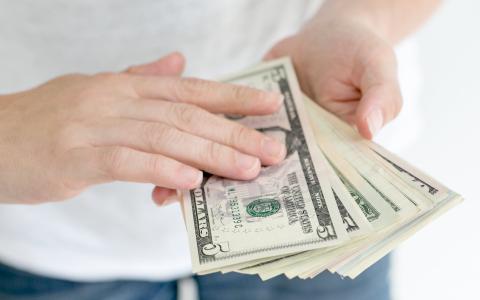
(Yahoo!Finance) - How fast does the Federal Reserve want to move on drawing down its pandemic-era stimulus?
That’s the question that Fed officials will have to answer in its two-day meeting kicking off Tuesday, where the major discussion will focus on the pace of the central bank’s wind down of its asset purchase program.
With inflationary pressures continuing to rise, Fed watchers expect the policy-setting Federal Open Market Committee (FOMC) to lean into a speedier timeline. On Friday, the Consumer Price Index showed prices rising by 6.8% year-over-year in November — the fastest pace seen since 1982.
For the Fed, which had insisted for most of 2021 that high inflationary readings would be “transitory,” the concern is that it may have to play catch-up to quell any fears of further inflation.
“If the market perceives that the Fed is behind the curve in controlling inflation, it would lead to higher inflation expectations and long-term interest rates, potentially weakening the dollar and pressuring asset values,” said Madhavi Bokil, senior vice president at Moody’s Investors Service.
Fed Chairman Jerome Powell and his other colleagues on the FOMC have already pledged to address any inflation that would jeopardize the economic recovery — pointing to the possibility of more hastily ending the Fed’s asset purchase program.
“If things continue to do what they've been doing, then I would completely support an accelerated pace of tapering,” San Francisco Fed President Mary Daly told Yahoo Finance on Nov. 23.
Since the depths of the pandemic, the Fed has been buying U.S. Treasuries and agency mortgage-backed securities in the open to signal its commitment to easy money policies.
The Fed was pacing those purchases at a clip of about $120 billion per month until November, when the FOMC charted a path for gradually “tapering” those purchases to a full stop by the middle of 2022.
2022.
But Fed officials will now debate the merits of a speedier wind down that could wrap up asset purchases as soon as the first quarter of next year.
Ask the curve itself
Luckily, the Fed can consult the curve. The yield curve, which maps out the yields of U.S. Treasuries across different durations, serves as a proxy for investor bets on future growth prospects. Generally speaking, higher longer-term bond yields (and a steeper curve) correspond with optimism over longer-term conditions.
But several yield curve measures show a flatter yield curve. For example, the difference between the U.S. 2-year and the U.S. 10-year Treasuries fell to as little as 75 basis points at the beginning of the month. When that difference falls below 0, markets usually brace for a recession.
“From the Fed’s perspective, a flat or inverted yield curve is undesirable,” said Solita Marcelli, chief investment officer Americas at UBS Global Wealth Management.
Marcelli said one reading of the flatter yield curve is the expectation that the Fed is behind the curve, and will need to pump on the brakes abruptly (via interest rate hikes) to stop inflation.
JPMorgan Chief Economist Michael Feroli told Yahoo Finance that he’s not so sure the Fed is all that behind the curve. Feroli said if the Fed had hiked interest rates as early as this year, the strength of the economic reopening would have led to only “moderately lower” inflation.
“They are a little behind the curve, but they can catch up to the curve, I’m quite sure of that,” Feroli said Monday.
The FOMC meeting begins Tuesday and concludes Wednesday, with the policy statement due Wednesday at 2 p.m. ET.
By Brian Cheung · Reporter



